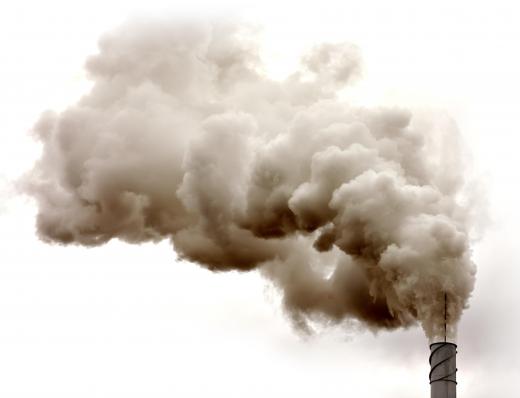What Is the Absorption Process?
An absorption process occurs when a chemical is removed from one gas or liquid stream by mixing it with another stream. This process can be used in chemical processing, refrigeration to cool foods, human digestion of vitamins and minerals, and when plants take in nutrients. In chemical processing, absorption is used to remove one or more valuable products from a gas or liquid stream of mixed chemicals.
Natural gas supplied to homes and businesses is primarily methane, a molecule of one carbon and hydrogen, or CH4. Gas that is taken from the ground during oil or gas drilling, however, is a mixture of several different gases. The various products may have value in other chemical operations, but are not used for heating homes. Absorption is used in several different steps to purify the methane and remove impurities such as sulfur and water.

Many other organic, or carbon-based, molecules can be removed in an absorption process using an oil-based product. Unprocessed natural gas is mixed with the oil in a processing tank to remove undesired gases that can be separated and used later. The methane-rich stream then passes through other tanks or vessels for further processing.
Removing water is an absorption process that often uses a desiccant, which is a silica or alumina-based product usually produced as round beads. Solid desiccant is loaded into a vertical tank called a tower, and the water-containing gas is passed through it. Water absorbs onto the desiccant surface because it is hydrophilic, which means it likes to attach water to its surface. Natural gas leaves the tower dry, and the desiccant can be heated later to remove the water and be reused.
A glycol-based chemical, similar to antifreeze used in automobiles, can also be used to remove water from natural gas or other streams. Glycol can absorb water due to a molecular bond in its chemical structure, so it will easily remove water from the gas stream. A tower can be used to bubble gas through the glycol, and the water-rich glycol can be processed later and reused in many cases.
One method for producing sulfuric acid uses an absorption process. Sulfur is first burned with oxygen to form sulfur dioxide (SO2), and then a secondary reaction creates sulfur trioxide, or SO3. This product mixes with a stream of sulfuric acid and SO3 is absorbed into the acid, making it more concentrated.
Starting in the late 20th century, acid manufacturers began using a double-absorption system to minimize the amount of SO2 being vented into the air. Sulfur dioxide is believed to contribute to air pollution that can cause acid rain, which is harmful to plants and animals. A double-absorption system repeats the burning and absorption process to minimize the amount of SO2.
Another use for an absorption process is removing carbon dioxide, or CO2, from industrial exhaust gases. Power plants and other industrial operations that burn coal or gas create large quantities of CO2, which can create environmental concerns. Exhaust gases can be processed in an absorption scrubber, where CO2 is absorbed into a liquid or in some cases onto a carbon-based solid, which can be processed later for disposal. Carbon dioxide removed this way is eventually landfilled, which is thought to be a better environmental option than allowing it into the air.
AS FEATURED ON:
AS FEATURED ON:











Discuss this Article
Post your comments